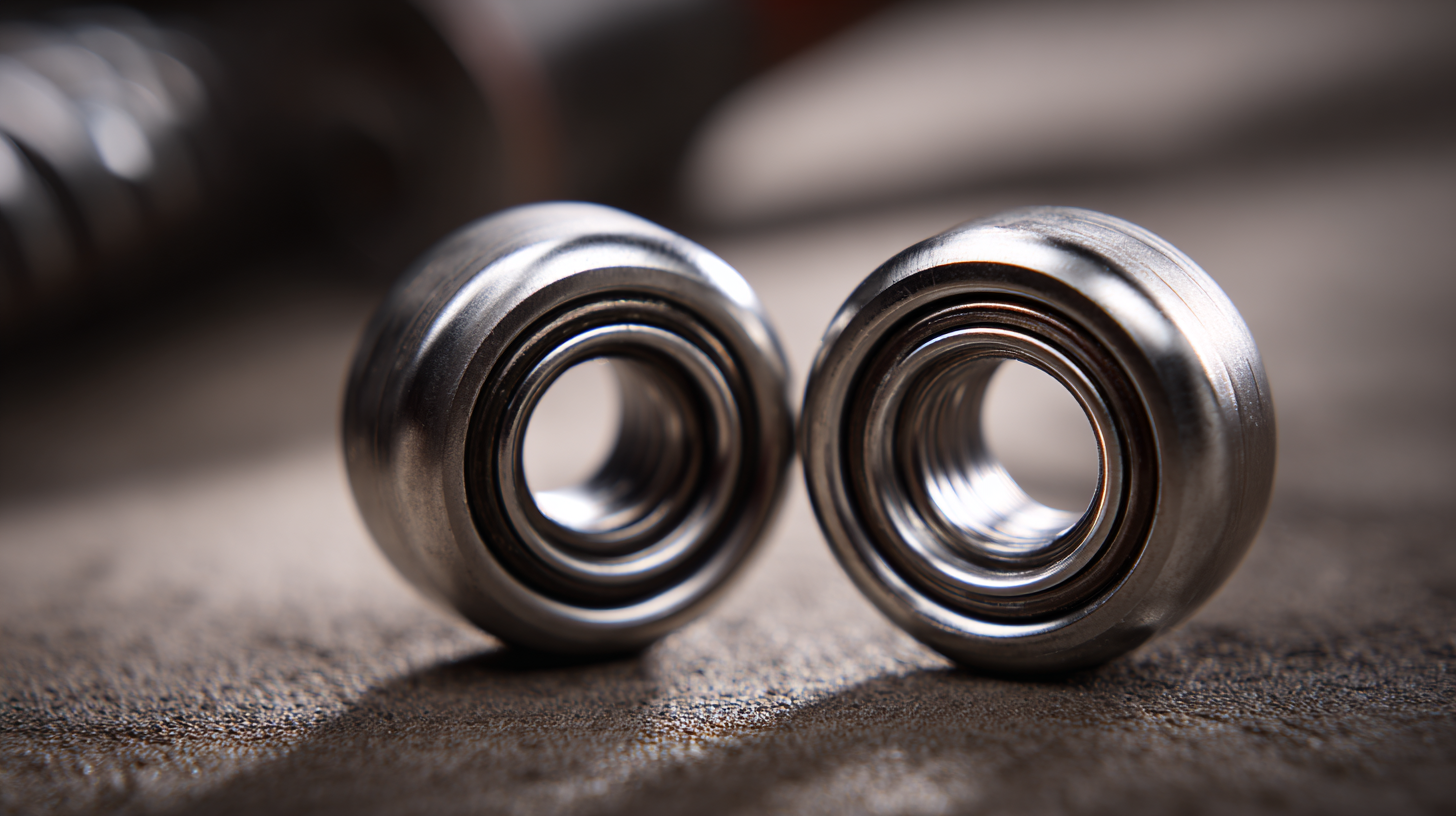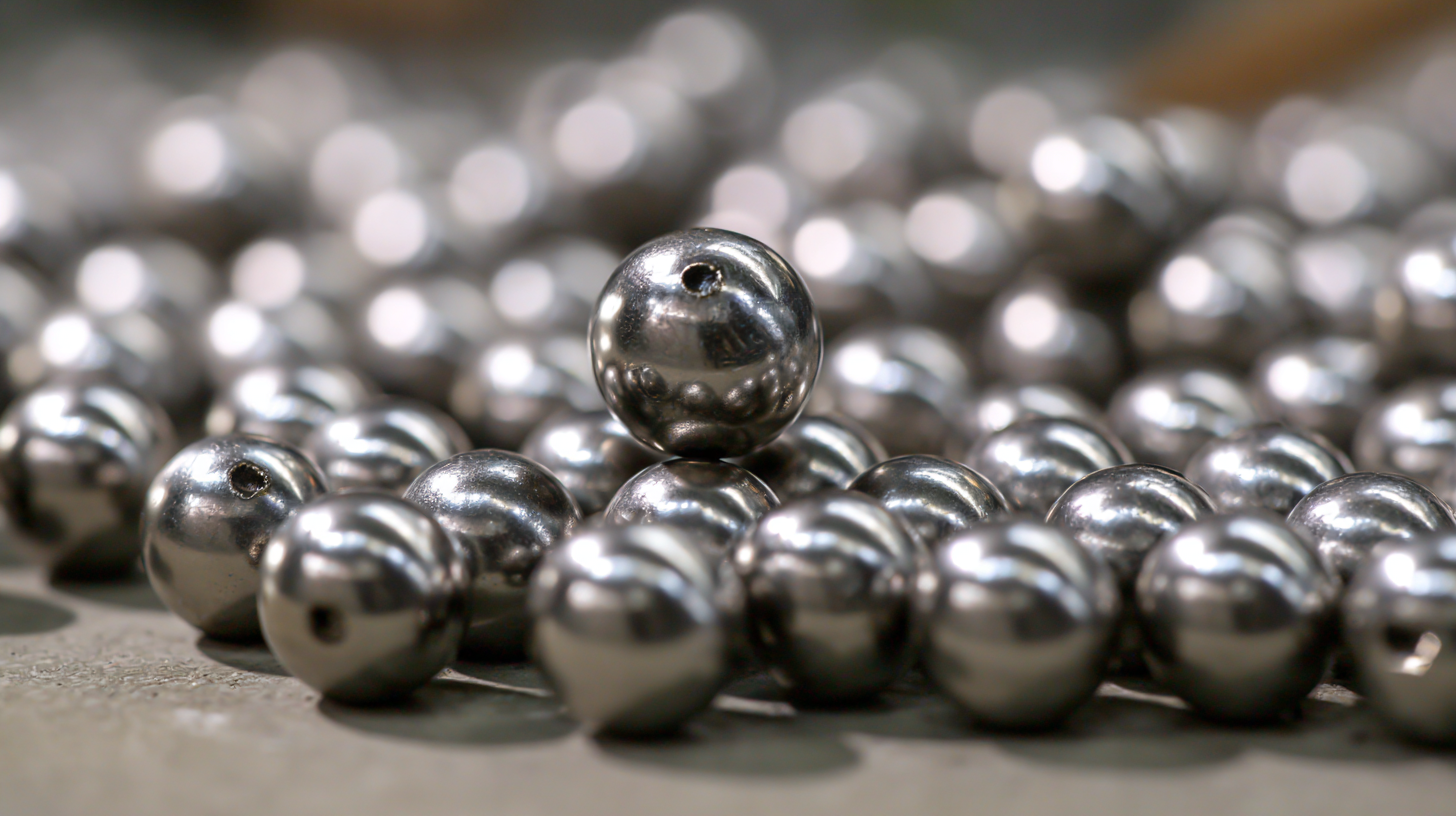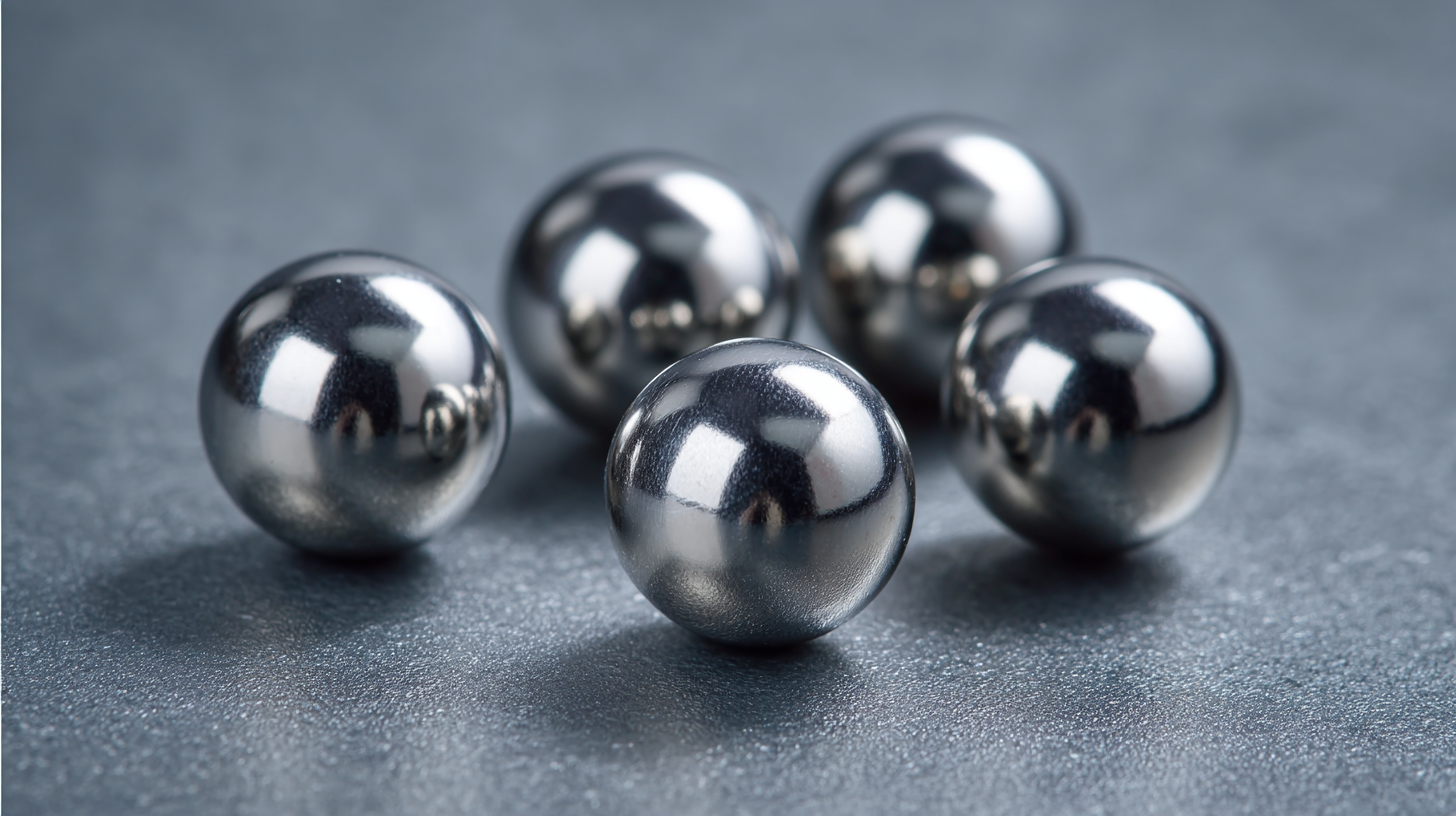When embarking on a project that requires precision and reliability, one of the critical components to consider is the selection of steel ball bearings. According to a recent report by Research and Markets, the global ball bearing market is expected to reach $22.2 billion by 2026, with steel ball bearings playing a significant role due to their superior load-bearing capabilities and durability.
 In industries ranging from automotive to aerospace, the choice of steel ball bearings can greatly impact the performance and longevity of machinery. This guide aims to provide insights into selecting the right steel ball bearings tailored to specific project needs, taking into account factors such as load ratings, material composition, and lubrication methods.
Whether for high-speed applications or heavy-duty environments, understanding these essentials is vital for ensuring optimal operational efficiency and reliability.
In industries ranging from automotive to aerospace, the choice of steel ball bearings can greatly impact the performance and longevity of machinery. This guide aims to provide insights into selecting the right steel ball bearings tailored to specific project needs, taking into account factors such as load ratings, material composition, and lubrication methods.
Whether for high-speed applications or heavy-duty environments, understanding these essentials is vital for ensuring optimal operational efficiency and reliability.
When selecting steel ball bearings for your project, it’s essential to understand the various types available and their specific applications. The most common types include deep groove ball bearings, angular contact bearings, and self-aligning bearings. Deep groove ball bearings are versatile and suitable for high-speed applications, making them ideal for electric motors and machinery. Angular contact bearings, on the other hand, are designed to accommodate axial loads and are commonly used in applications where thrust loads are present, such as in automotive and aerospace industries.
Tips: Always consider the load capacity of the bearing for your specific application. Overloading can lead to premature failure, so ensure that the bearing can handle the expected load. Additionally, look for the correct sealing options to protect against dust and moisture, especially in outdoor or industrial environments where contaminants can significantly impact performance.
Another important factor is the lubrication method. Most steel ball bearings are pre-lubricated, but depending on your project’s requirements, you may need to consider whether additional lubrication is necessary over time to maintain optimum performance. Using the right lubricant can enhance the lifespan of the bearings and improve their efficiency, ensuring smoother operation and reduced friction.
When selecting steel ball bearings for a project, there are several key factors to consider to ensure optimal performance and durability. First, the material composition of the bearings is crucial, as it directly affects their load-carrying capacity and resistance to wear. According to a report from the American Bearing Manufacturers Association (ABMA), high-carbon chromium steel is commonly used for its excellent hardness and fatigue strength, providing superior performance in high-load applications.
Another important consideration is the bearing's size and load rating. The ISO 281 standard provides guidelines for calculating bearing life based on load conditions and rotating speed, helping engineers determine suitable options for their specific applications. For instance, selecting a bearing with a higher dynamic load rating can significantly enhance its lifespan, especially in demanding environments with constant motion. Additionally, lubrication type and method play a significant role in the longevity of ball bearings; studies indicate that proper lubrication can extend service life by up to 50%.
Ultimately, understanding these factors—material composition, load ratings, and lubrication—can guide professionals in making informed decisions when choosing steel ball bearings for their projects, thereby improving efficiency and reducing maintenance costs.
When selecting steel ball bearings for your project, understanding load ratings and performance specifications is crucial. Load ratings determine how much weight a bearing can handle while maintaining optimal performance. The Dynamic Load Rating (C) is a vital metric, representing the maximum load a bearing can endure while rotating. According to the American Bearing Manufacturers Association (ABMA), typical dynamic load ratings can range from 500 to over 10,000 pounds, depending on the bearing size and design. It's essential to match the load rating with your application requirements to avoid premature failure.

Tips: Always consider the application's environment when assessing load ratings. For high-speed applications, look for bearings designed for increased performance under rotational stress. Alternatively, for applications exposed to harsh conditions, opt for corrosion-resistant bearings that meet specific material standards, like ASTM A276 for stainless steel, ensuring longevity.
Additionally, evaluating Performance Specifications, including speed ratings and temperature limits, is vital. For instance, bearing speed ratings often measured in RPM (revolutions per minute) can significantly influence efficiency. Research indicates that a higher-quality bearing can sustain faster speeds, reducing friction and wear. Make sure to refer to manufacturer catalogs, which provide detailed specifications and recommended maximum speeds for various bearing types, to ensure proper selection for your application.
When selecting steel ball bearings for your project, one crucial factor to consider is the environmental conditions in which they will operate. Temperature fluctuations, humidity levels, and exposure to corrosive substances can all significantly impact the performance and lifespan of the bearings. For instance, bearings used in high-temperature applications may require heat-resistant materials, while those exposed to moisture should have protective coatings to prevent rust.
**Tips:** Always assess the specific environment where the bearings will be deployed. If they'll be used outdoors, consider bearings with seals and shields to block dirt and moisture. Furthermore, in situations where vibration or shock loads are prevalent, opt for bearings with enhanced load capacity to ensure durability.
Another vital aspect is the choice of lubrication, which can be affected by environmental factors. In high-dust or dirty areas, using sealed bearings might be preferable to maintain lubrication integrity. Alternatively, in clean environments, open bearings may suffice, allowing easier access for maintenance.
**Tips:** Evaluate the lubrication options available, such as grease versus oil, based on the operating conditions and maintenance accessibility. Regular inspection and timely relubrication can also help extend the bearings' operational efficiency and lifespan.

When selecting steel ball bearings for a project, one of the crucial decisions involves balancing cost-effectiveness with quality. Cost is often the first factor that comes to mind. While lower-priced bearings may seem financially appealing at first, they can lead to higher long-term expenses due to increased maintenance, increased friction, and the need for premature replacements. This makes it essential to assess the potential hidden costs associated with poor-quality bearings, which can include downtime and the impact on overall project efficiency.
On the other hand, investing in higher-quality steel ball bearings can provide significant benefits. Quality bearings often come with better performance characteristics, such as lower rolling resistance and increased load capacity, fostering longer life spans and reliability. This investment not only enhances the performance of machinery but also contributes to smoother operations and less frequent maintenance. Ultimately, choosing the right bearings for your project means weighing the initial costs against the long-term benefits of quality, ensuring that you strike the right balance for optimal performance and sustainability in your operations.
| Bearing Type | Material | Load Capacity (lbs) | Price per Unit ($) | Durability Rating (hours) | Application Suitability |
|---|---|---|---|---|---|
| Deep Groove Ball Bearing | Chrome Steel | 500 | 2.50 | 3000 | General Purpose |
| Angular Contact Ball Bearing | Stainless Steel | 400 | 3.75 | 2500 | High-Precision Machinery |
| Self-Aligning Ball Bearing | Chrome Steel | 600 | 4.20 | 2800 | Heavy Load Applications |
| Thrust Ball Bearing | Stainless Steel | 800 | 5.00 | 2000 | Rotational Applications |
| Hybrid Ceramic Ball Bearing | Ceramic/Chrome Steel | 1200 | 15.00 | 5000 | High-Speed Applications |
To learn more about any of the products and services provided by Abbott Ball Company, Inc., simply complete the form below.